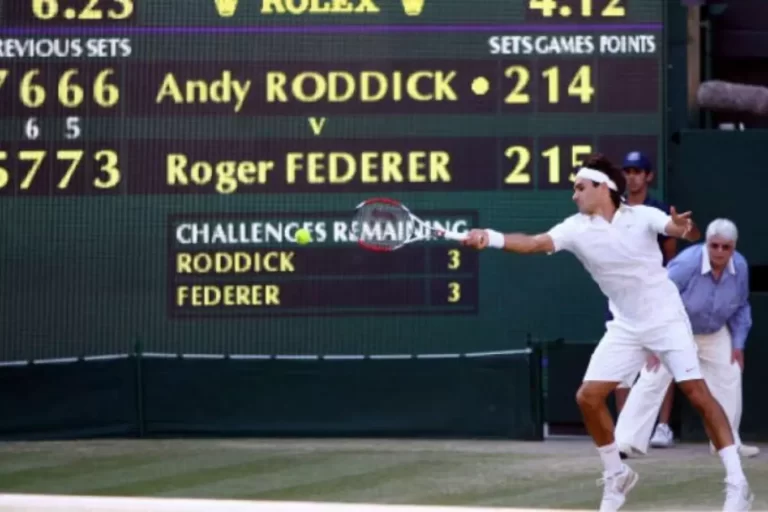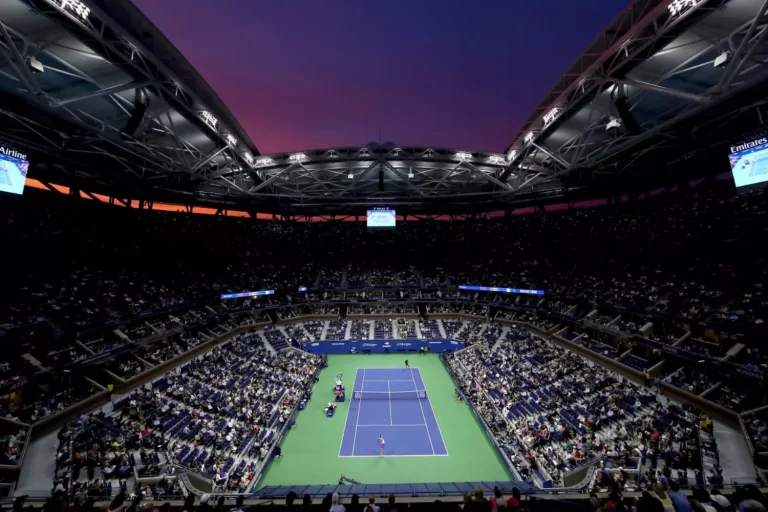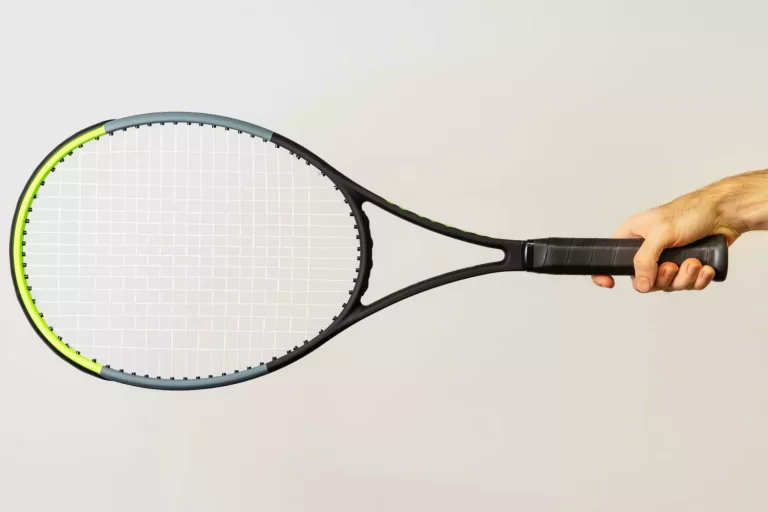Tennis Court Dimensions, Size & Layout Diagram
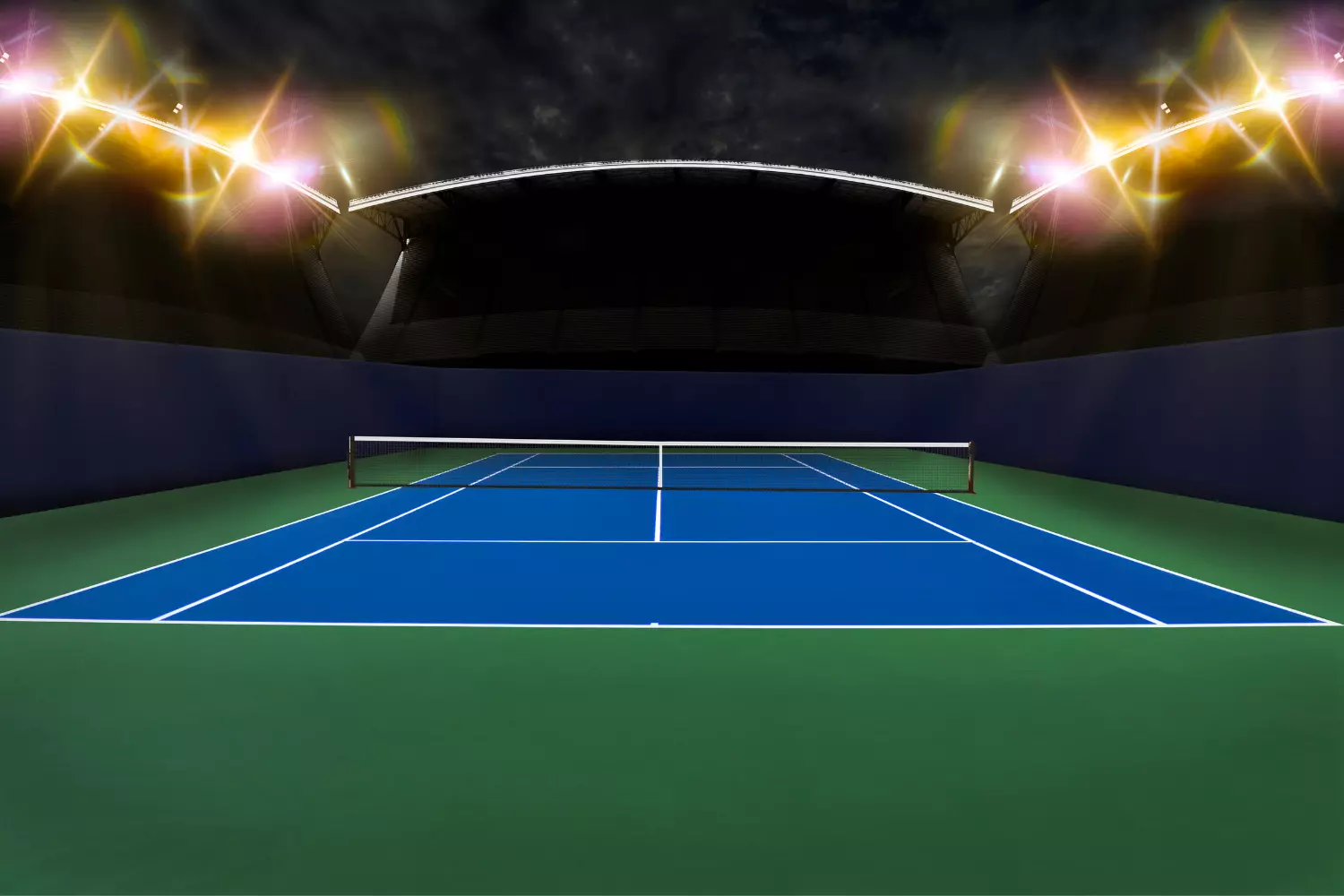
Tennis court dimensions, layout, and various parts are important to understand if you’re new to the game. This will help you gain an early understanding of how tennis is an angle-based sport and give you more confidence the first time you step on the court.
Practically speaking, you should familiarize yourself with the size and specific measurements of a tennis court before building it or verifying the construction of one that already exists.
Whether you are building a tennis court for recreation or for professional use, we have all the details and guidelines you need to know about How Big is a Tennis Court.
Layout of Tennis Court Dimensions

International Tennis Federation (ITF) regulations specify that a tennis court that can be used for doubles and singles play measures 78 feet by 36 feet or 2,808 square feet. 78 feet by 27 feet or 2,106 square feet is the size of the singles court.
The following table includes imperial and metric conversions for measuring the size of a court. Table data can be viewed by scrolling or swiping left to right.
| Measurement | Feet | Inches | Yards | Meters | Centimeters |
| Length | 78 ft | 936 in | 26 yd | 23.774 m | 2,377.4 cm |
| Width | 36 ft | 432 in | 12 yd | 10.973 m | 1,097.3 cm |
| Surface Area | 2,808 sq ft | 416,016 sq in | 312 sq yd | 260.872 sq m | 26,087.2 sq m |
This measurement is made on the outside of all painted lines on a court.
This measurement refers to the size of the playing area for a tennis court, not the run-off or side and backspace required for competition by players.
Layout & Diagram
Below is a diagram with measurements and labels to help you better understand the layout of a tennis court. As I review each section in the following sections, you can use this diagram as a reference.
Area of the overall playing surface
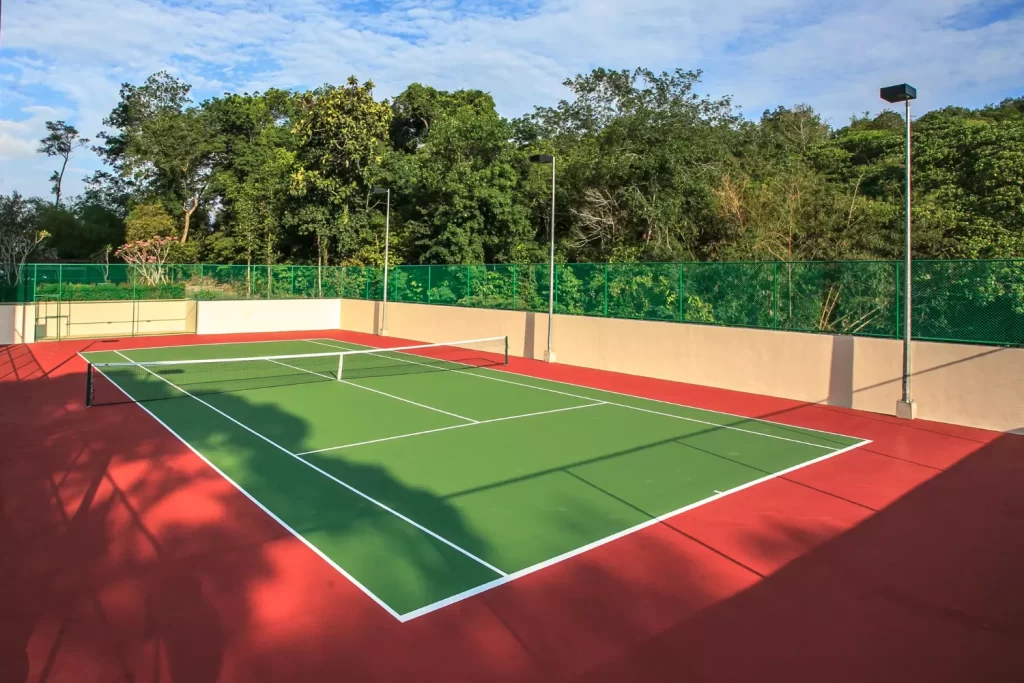
On a tennis court, you’ll likely notice players are able to move freely around the court due to the space on the sides and back. Run-off is the term used to describe this space.
For international competitions as well as recreational or club play, the ITF recommends a minimum run-off. It applies to all types of court surfaces, such as hard surfaces, clay surfaces, grass surfaces, carpet surfaces, and concrete surfaces.
Run-off for international competitions
To accommodate bench people, umpires, and ball people, international competition courts have larger minimum run-offs.
- Behind Baseline: 21 ft (6.40 m)
- To the Side of the Court: 12 ft (3.66 m)
- Overall Court Length: 99 ft (30.18 m)
- Overall Court Width: 48 ft (14.63 m)
- Overall Court Surface Area: 4,752 sq ft (441.48 sq m)
Club or recreational play run-offs
In recreational or club play, there is less run-off, but enough space for players to move around the court without crashing into surrounding fences or backstops.
- Behind Baseline: 18 ft (5.48 m)
- To the Side of the Court: 10 ft (3.05 m)
- Overall Court Length: 96 ft (29.26 m)
- Overall Court Width: 46 ft (14.02 m)
- Overall Court Surface Area: 4,416 sq ft (410.26 sq m)
It is important to note that these are minimums, and the amount of run-off will vary drastically from court to court. At the Grand Slams, for instance, there is a much larger run-off on show courts.
Later in this guide, I’ll discuss the sizes of center courts at the majors, which affect pros’ strategies and tactics.
You may also love to read Why Is Tennis Scored The Way It Is?
Requirements for vertical space
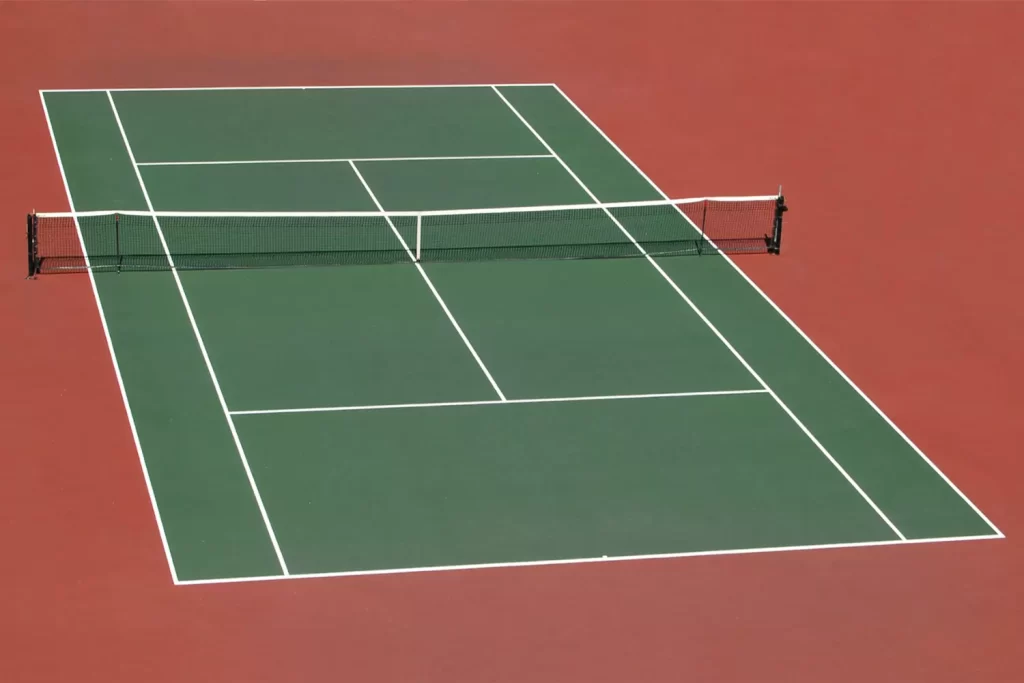
The ball must have sufficient overhead space to avoid hitting the roof or ceiling while playing on indoor courts.
It offers minimum requirements for tournaments that are competitive as well as those played recreationally or at clubs.
| Type | Minimum Height Above Net* | Minimum Height Above Baseline | Minimum Height Above Backstop |
| Recreational | 29.6 ft (9.00 m) | 20 ft (6.10 m) | 16 ft (4.88 m) |
| Tournament | 40 ft (12.19 m) | 40 ft (12.19 m) | 40 ft (12.19 m) |
From the court surface, the height above the net.
Due to the fact that these requirements are minimums, different facilities may have different ceiling heights.
The lines of a court
In order to learn how to play tennis and follow along during conversations and broadcasts, it’s helpful to become familiar with the lines of a tennis court.
The ITF specifies the width specifications for all tennis court lines before jumping in. The following are some of them:
- Center service line: 2 in (5 cm) wide
- Center mark: 2 in (5 cm) wide
- Baseline: Up to 4 in (10 cm), no less than 1 in (2.5 cm)
- All other lines: Between 1 in (2.5 cm) and 2 in (5 cm)
The outside of the lines is used for all measurements on the court.
Baseline
36 ft (10.97 m) for doubles/27 ft (8.23 m) for singles
Both sides of the baseline have a parallel run parallel to the net, defining the farthest back boundary of the court. In tennis, you’ll hit your most groundstrokes (forehands and backhands) here, as well as standing in approximately the same depth during serve returns. The ball is out of bounds if it lands beyond the baseline.
Center Mark
4 in (10.16 cm) long
This line cuts the baseline in half perpendicular to the net, and divides it in half again. The deuce point (right side) and ad court point (left side) cannot be crossed when serving. As a coach will always tell you after hitting a groundstroke, it’s a good reference point.
Service Line
27 ft (8.23 m) wide
Approximately halfway between the net and the baseline is the service line, which runs parallel to the net.
As well, the service boxes come to an end. Unlike the baseline, this extension extends only to the sidelines of the singles court. This line is the end of the court for any serve that lands beyond it.
Center Service Line
Long at 42 feet (12.80 meters)
There are two equal-sized service boxes on each side of the court created by the center service line, which runs perpendicular to the net. Consequently, it measures 21 feet (6.40 meters) on each side.
Singles Sidelines
Length: 39 ft (11.89 m)
Matches played on the singles court are governed by sidelines extending parallel to the net.
Doubles Sidelines
39 ft (11.89 m) long
Perpendicular to the net, the doubles sidelines define the side boundaries of the court during doubles matches. The singles sidelines are four and a half feet from these lines.
You may also love to read Best Tennis String Tension Finding Guide
The areas of a court
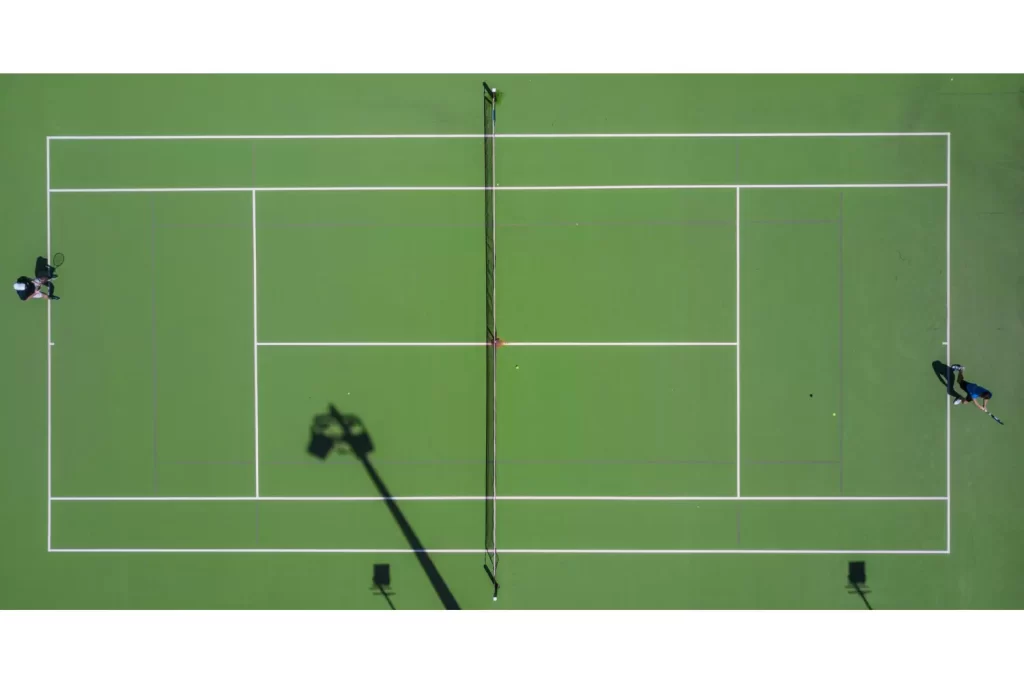
Below, I have defined different areas or boxes formed by the lines of a tennis court.
Service Boxes
21 ft x 13.5 ft (283.5 sq ft)
6.4 m x 4.05 m (26.34 sq m)
By intersecting the center service line and the deuce (right) service line, two equal-sized boxes are created. They get their name from the fact that a player must hit a serve into one of these boxes to begin a point.
Doubles Alley
39 ft x 4.5 ft (175.5 sq ft)
11.89 m x 1.37 m (16.30 sq m)
Located between the singles and doubles sidelines, the doubles alley is a space that serves as a connection between them. Doubles alleys are only used in doubles competitions. When it comes to singles, players ignore it.
Back Court (No Man’s Land)
18 ft x 27 ft (486 sq ft)
5.49 m x 8.23 m (45.15 sq m)
Tennis courts have a backcourt, which is the open area between the baseline and the service line. This part of the court is called ‘no man’s land’ by tennis instructors and coaches because you won’t be able to hit a solid volley from here because you will be too close to the net to groundstroke.
Generally, players get to the net to volley or hit an approach shot, but they do not hover in no man’s land.
You may enjoy reading Serena Williams Racket And String
Sizes of Grand Slam Center Courts
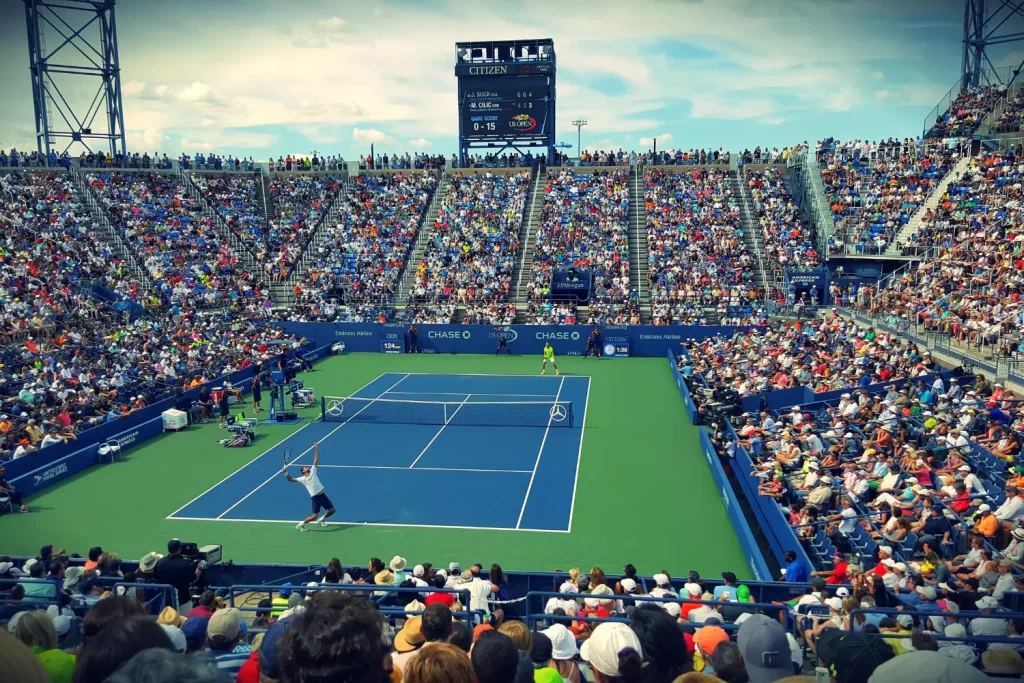
A Grand Slam tournament is one that includes the Australian Open, the French Open, Wimbledon, and the US Open.
In order to gain a full understanding of what these tournaments are like, you need to watch the live coverage of center court, where the top-ranked players and most prominent names compete.
The largest fan capacity is found in these courts, also called show courts. For several reasons, the run-off or space to the sides and back of the court is significantly larger, even though it is the same size as any other court, 78 feet long x 36 feet wide or 2,808 square feet.
For starters, a court must have enough room to accommodate an umpire, ball people, benches, coolers, etc. As an aesthetic aspect, the bigger court also looks better in a large stadium.
As a result, more space is provided for the players to compete around the court or run-off. The extra space can be used to great advantage by players when returning serves or chasing down balls.
Every Grand Slam event, however, has a different center court. Each of them has the following measurements. To view the entire table, scroll or swipe left to right.
| Tournament | Court | Side Run-Off | Back Run-Off | Total Length | Total Width | Total Area |
| Australian Open | 78 ft x 36 ft (23.774 m x 10.973 m) | 25 ft (7.62 m) | 32.97 ft (10.05 m) | 143.94 ft (43.873 m) | 86 ft (26.213 m) | 12,378.84 sq ft (1,150.032 sq m) |
| French Open | 78 ft x 36 ft (23.774 m x 10.973 m) | 21.03 ft (6.41 m) | 31.99 ft (9.75 m) | 141.98 ft (43.276 m) | 78.06 ft (23.793 m) | 11,082.959 sq ft (1,029.651 sq m) |
| Wimbledon | 78 ft x 36 ft (23.774 m x 10.973 m) | 22.01 ft (6.71 m) | 27 ft (8.23 m) | 132 ft (40.234 m) | 80.02 ft (24.390 m) | 10,562.64 sq ft (981.301 sq m) |
| US Open | 78 ft x 36 ft (23.774 m x 10.973 m) | 25 ft (6.41 m)* 17 ft (5.18 m)** | 27 ft (8.23 m) | 132 ft (40.234 m) | 78 ft (23.774 m) | 10,296 sq ft (956.53 sq m) |
Run-off for the US Open on the left court (umpire side)
Run-off for the US Open on the right court
This means that the Australian Open hosts the biggest tennis court out of all the majors, while the US Open hosts the smallest. There are 23,771 seats in the US Open, the largest of all four.
You may enjoy reading Australian Open Prize Money 2024 – 2023
The dimensions of the kids’ court
Children will learn more effectively on smaller courts, as instructors will use smaller surfaces for them. The sport is known as 10 and Under Tennis in the United States, while it is called Hot Shots or Youth Tennis in other countries.
There is only one objective in all programs: to get kids involved in tennis by matching court sizes and equipment to their age, allowing them to learn and enjoy the sport quickly.
The levels of 10 and Under Tennis correspond with a child’s age and are red, orange, green, and yellow. Kids under the age of eight are placed in the red stage.
Each stage’s court size is listed below.
| Stage | Singles | Doubles |
| Red | 36 ft x 18 ft (10.973 m x 5.496 m) | n/a |
| Orange | 60 ft x 21 ft (18.288 m x 6.401 m) | 60 ft x 27 ft (18.288 m x 8.23 m) |
| Green | 78 ft x 27 ft (23.774 x 8.23 m) | 78 ft x 36 ft (23.774 m x 10.973 m) |
| Yellow | 78 ft x 27 ft (23.774 x 8.23 m) | 78 ft x 36 ft (23.774 m x 10.973 m) |
It is also important to keep enough space to the sides and back of the court so kids can run around unhindered.
For this reason, some parents chalk their driveway lines for their kids. Set up a home tennis court with just a kids’ tennis net.
Additional Court Elements

Playing the game requires additional features beyond the court surface, although the surface creates the foundation. A tennis court must have the following elements.
Net
42 ft long x 3.5 ft high at the posts (3 ft at the center)
12.8 m long x 1.07 m high (.91 m at the center)
Tennis courts are divided in half by the net which runs directly down the middle, acting as the primary obstacle. To keep the net tight, two-inch white straps are fastened to the ground to control its height.
In order to ensure the ball cannot pass through the net, tennis nets should have squares measuring one and three-quarter inches. An inch-long white band should surround the net chord to prevent the net from slipping.
Helpful tip: Measure the height of the net before playing tennis with a retractable measuring tape or net checker. Tennis already has plenty of variables, so players should try to control what they can.
Net Posts
3.5 ft tall and no more than 6 in wide
1.07 m tall and no more than 15.24 cm wide
Both doubles and singles net posts should be three feet outside of the doubles sideline directly in the middle of the court. Maintains the proper height of the net at both ends of the court. Singles net posts may be used instead of singles sticks in some cases. A three-foot distance will separate the singles sideline from these net posts. Six inches is the maximum width for the posts.
Singles Sticks
3.5 ft tall and no more than 3 in wide
1.07 m tall and no more than 7.62 cm wide
A doubles net requires three and a half feet of height at the sides, which is achieved by propping the net up with singles sticks. The hassle and easy theft of single sticks make them a no-go on many courts, particularly in high schools and colleges.
Tennis tournaments, however, always use singles sticks to ensure the net is the right height as you watch a professional match. Portable nets that collapse to fit in your bag are available if you are playing on public courts.
Fencing
8 ft high for residential / 10 ft for club or park
2.438 m high for residential / 3.048 m for club or park
A tennis court typically has a fence around it to prevent tennis balls from leaving the court. Balls may cause damage or hit people if high fences are used.
Space Between Adjacent Courts
12 ft minimum / 24 ft recommended
3.658 m minimum / 7.315 m recommended
Multiple tennis courts are often built next to each other without fences separating them to conserve space and save money.
There is a minimum distance of 12 ft (3.658 m) in all circumstances. The spacing should be increased to 24 feet (7.315 meters) for optimal playing conditions.
You may enjoy reading Using Forced Errors In Tennis
How Much Space Needed to Build a Court?
You’ll need to ensure enough space before you start building a tennis court, considering the entire court’s components, including run-offs and fencing. For the court surface, here are the measurements.
International Competition
- Overall Court Length: 99 ft (30.18 m)
- Overall Court Width: 48 ft (14.63 m)
- Overall Court Surface Area: 4,752 sq ft (441.48 sq m)
Recreational or Club
- Overall Court Length: 96 ft (29.26 m)
- Overall Court Width: 46 ft (14.02 m)
- Overall Court Surface Area: 4,416 sq ft (410.26 sq m)
If you plan on fencing or building a backstop, you will need to add between 3 and 10 feet (.91 – 3.05 m) to each side for the playing area.
For international competition and recreational purposes, here is the minimum space needed.
International Competition
- Overall Court Length: 102 ft (30.18 m)
- Overall Court Width: 51 ft (14.63 m)
- Overall Court Surface Area: 5,202 sq ft (483.28 sq m)
Recreational or Club
- Overall Court Length: 99 ft (29.26 m)
- Overall Court Width: 49 ft (14.02 m)
- Overall Court Surface Area: 4,851 sq ft (450.67 sq m)
If you need more space for other needs, go ahead and add it. You can increase the space around the court if you want to add covered benches or sitting areas.
Conclusion
You’ve got it! This article will provide you with all the information you need about the tennis court dimensions and its diagram layout.
You can use this guide to learn the basics of tennis, whether you’re new to the game or building a court. You can ask any questions in the comments below if you have them.
You can also read Best Tennis Rackets Under 50$
